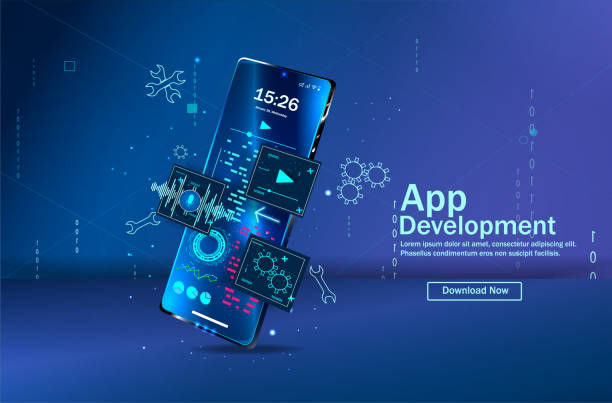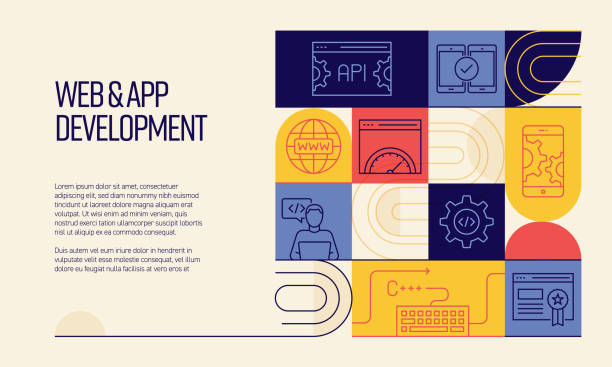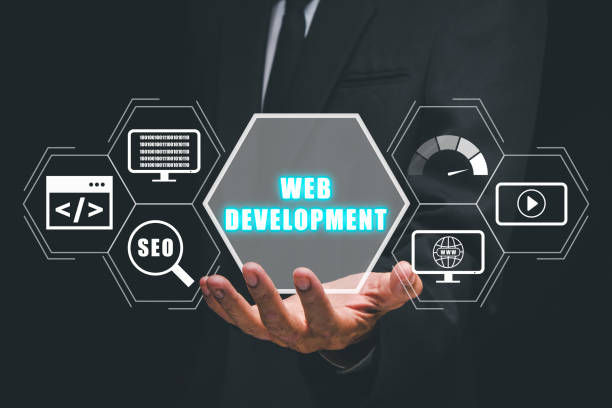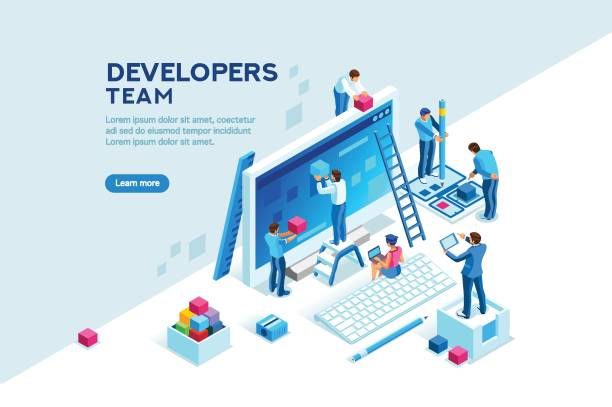The Importance of Accessibility in Application Development:
- The Moolah Team
- Jul 6, 2023
- 9 min read
In this post, we'll explore the importance of making applications accessible to users with disabilities, and provide guidance on how to design and develop applications that are inclusive and user-friendly for all.
I. Introduction: Why Accessibility is Crucial in Application Development
As technology continues to evolve and transform various industries, the need for inclusive and accessible technology has become more apparent. Accessibility in application development refers to designing and developing technology products and services in a way that can be used by individuals with disabilities, including but not limited to visual, auditory, cognitive, and physical disabilities.
Unfortunately, many developers often overlook the importance of accessibility in their work. They may believe that it is unnecessary, or that it will be too costly or time-consuming to implement. However, the truth is that accessibility is crucial for ensuring that technology can be used by everyone, regardless of their abilities.
The lack of accessibility in technology has significant implications for people with disabilities, including limited access to job opportunities, education, and other essential services. Inaccessible technology can also cause frustration and feelings of isolation among people with disabilities, who may feel like they are excluded from using technology that is essential for daily life.
But accessibility is not just important for individuals with disabilities - it's important for everyone. For example, captions on videos not only make them accessible for individuals who are deaf or hard of hearing, but they also make videos more accessible for people who are in a noisy environment or who are not native speakers of the language being spoken.
In addition, accessible technology can improve the user experience for everyone. For example, designing applications that can be navigated using a keyboard rather than a mouse can benefit users who prefer keyboard shortcuts, as well as users who have limited mobility.
In short, accessibility is not just a legal requirement or an ethical consideration - it is a necessity for ensuring that technology is inclusive and user-friendly for everyone. In the following sections, we will explore the importance of accessibility in more detail, the types of disabilities that can affect technology use, and how to design and develop accessible applications.

II. The Impact of Inaccessible Technology on Individuals with Disabilities
People with disabilities are often excluded from using technology products and services that are not designed with their needs in mind. This exclusion can have a significant impact on their daily lives, limiting their access to essential services, social networks, and employment opportunities.
For individuals with visual impairments, inaccessible technology can make it difficult or impossible to access information on websites or applications. For example, images without alt text can prevent individuals who are blind or have low vision from understanding the content of a website or application. Similarly, colour contrast issues can make it difficult for individuals with certain visual impairments to distinguish between different elements on a website or application.
For individuals who are deaf or hard of hearing, inaccessible technology can make it difficult or impossible to access audio content or participate in video calls. Without captions or transcripts, individuals who are deaf or hard of hearing may miss important information or be unable to fully participate in conversations or events.
Cognitive disabilities can also affect an individual's ability to use technology. For example, individuals with dyslexia may struggle with reading and processing text on a website or application. Similarly, individuals with attention deficit hyperactivity disorder (ADHD) may have difficulty focusing on complex or lengthy tasks, such as filling out lengthy forms on a website.
Finally, physical disabilities can affect an individual's ability to use technology as well. For example, individuals with limited mobility may have difficulty using a mouse or other pointing device, making it challenging to navigate a website or application. Similarly, individuals with motor disabilities may have difficulty typing on a keyboard, making it challenging to complete tasks that require typing.
Inaccessible technology can have a significant impact on the daily lives of individuals with disabilities, limiting their access to essential services and opportunities. By designing and developing accessible technology, we can help to ensure that individuals with disabilities have the same opportunities as those without disabilities to participate in society and access the services they need. In the following sections, we will explore how to design and develop accessible applications that are inclusive and user-friendly for everyone.

III. The Benefits of Accessibility in Application Development
Designing and developing accessible applications not only benefits individuals with disabilities but also has numerous benefits for businesses and organizations.
Here are some of the key benefits of accessibility in application development:
Increased User Engagement
By designing applications that are accessible to a wider range of users, businesses can increase user engagement and satisfaction. Accessible applications are easier to use for everyone, not just individuals with disabilities, which can lead to increased usage and engagement.
Improved SEO
Designing accessible applications can also improve search engine optimization (SEO). By including alt text for images and other accessibility features, businesses can make their websites and applications more easily discoverable by search engines.
Increased Market Reach
Designing accessible applications can help businesses to reach a wider market, including individuals with disabilities. This can lead to increased market share and revenue opportunities.
Compliance with Regulations
There are regulations in place that require businesses and organizations to ensure their websites and applications are accessible to individuals with disabilities. By designing and developing accessible applications, businesses can ensure compliance with these regulations and avoid potential legal issues.
Reputation and Brand Image
Designing and developing accessible applications can also improve a business's reputation and brand image. By showing a commitment to inclusivity and accessibility, businesses can demonstrate their values and attract customers who prioritize these values.
Overall, designing and developing accessible applications has numerous benefits for businesses and organizations. By prioritizing accessibility, businesses can improve user engagement, reach a wider market, ensure compliance with regulations, and enhance their reputation and brand image. In the following sections, we will explore how to design and develop accessible applications that are inclusive and user-friendly for everyone.

IV. Designing Accessible Applications
Designing accessible applications involves considering the needs and preferences of individuals with disabilities throughout the development process.
Here are some key considerations for designing accessible applications:
A. Use Clear and Consistent Navigation
Clear and consistent navigation is important for all users, but particularly for individuals with disabilities. Applications should have a clear and easy-to-use navigation system that is consistent throughout the application. This can include a clear hierarchy of headings, easy-to-find links, and intuitive menus.
B. Use Colour and Contrast Effectively
Colour and contrast can have a significant impact on the accessibility of an application. It is important to ensure that text and graphics have sufficient contrast to be easily read by all users, including those with visual impairments. This can be achieved by using high-contrast colour combinations, avoiding colour combinations that may be difficult to distinguish, and providing alternative text descriptions for images.
C. Provide Alternative Text for Images
Providing alternative text descriptions for images is an important accessibility consideration. Screen readers and other assistive technologies rely on alternative text to describe images to users with visual impairments. It is important to provide concise and descriptive alternative text for all images within an application.
D. Ensure Keyboard Accessibility
Keyboard accessibility is critical for individuals with mobility impairments or other disabilities that prevent them from using a mouse. All functions within an application should be accessible via keyboard shortcuts or other means to ensure that individuals can fully interact with the application without the use of a mouse.
E. Provide Captions and Transcripts for Video and Audio Content
Captions and transcripts are essential for individuals with hearing impairments or those who are deaf. All video and audio content within an application should include captions or transcripts to ensure that all users can access the content.
F. Consider Assistive Technology
Assistive technology can be a powerful tool for individuals with disabilities, allowing them to access and interact with applications in new ways. It is important to consider how individuals may use assistive technology to interact with an application and to design and develop the application to support these technologies.
By considering these key factors and designing with accessibility in mind, businesses and organizations can ensure that their applications are inclusive and accessible to all users, regardless of ability or disability. In the next section, we will explore some best practices for testing and evaluating the accessibility of an application.

V. Testing and Evaluating Application Accessibility
Testing and evaluating the accessibility of an application is an important step in ensuring that it is usable and accessible to all users, including those with disabilities.
Here are some best practices for testing and evaluating the accessibility of an application:
A. Conduct Automated Accessibility Testing
Automated accessibility testing tools can help identify potential accessibility issues within an application. These tools can scan an application for accessibility issues, such as missing alternative text descriptions, lack of keyboard accessibility, and insufficient color contrast. While automated testing tools can be helpful, they should not be relied upon solely for evaluating the accessibility of an application.
B. Conduct Manual Accessibility Testing
Manual accessibility testing involves manually reviewing an application for accessibility issues. This can include reviewing the application's layout, design, and content to ensure that it is accessible to all users, including those with disabilities. Manual testing can also involve using assistive technology to test the application's accessibility.
C. Involve Individuals with Disabilities in Testing
Involving individuals with disabilities in the testing process can provide valuable insights into the accessibility of an application. By working with individuals with disabilities, businesses and organizations can gain a better understanding of the challenges that these users may face when using the application and can identify opportunities for improvement.
D. Conduct User Testing
User testing involves observing individuals as they use an application and gathering feedback on its accessibility and usability. User testing can help identify usability and accessibility issues that may not have been identified during automated or manual testing. It is important to involve individuals with disabilities in user testing to ensure that their needs and preferences are taken into consideration.
E. Develop an Accessibility Statement
An accessibility statement is a public statement that communicates a business or organization's commitment to accessibility and outlines the steps that have been taken to ensure that an application is accessible. An accessibility statement can help users with disabilities feel more confident in using an application and can demonstrate a business or organization's commitment to inclusion.
By following these best practices, businesses and organizations can ensure that their applications are accessible and usable for all users, including those with disabilities. In the next section, we will explore the benefits of designing and developing accessible applications.

VI. The Benefits of Designing and Developing Accessible Applications
Designing and developing accessible applications can benefit businesses and organizations in a number of ways. In this section, we will explore some of the key benefits of accessibility in application development.
A. Increased User Base
By designing and developing accessible applications, businesses and organizations can increase their user base to include individuals with disabilities. In the United States alone, there are over 61 million individuals with disabilities, representing a significant portion of the population. By designing and developing applications that are accessible to these individuals, businesses and organizations can tap into a large and often underserved market.
B. Improved User Experience
Designing and developing accessible applications can also improve the user experience for all users, including those without disabilities. For example, by using alternative text descriptions for images and videos, users with slow internet connections or those using assistive technology can still understand the content. By ensuring that an application is keyboard accessible, users who prefer to navigate with a keyboard rather than a mouse can use the application more easily.
C. Compliance with Legal Requirements
In many countries, including the United States, there are legal requirements for applications to be accessible to individuals with disabilities. For example, in the US, the Americans with Disabilities Act (ADA) requires that businesses and organizations ensure equal access to goods and services for individuals with disabilities. By designing and developing accessible applications, businesses and organizations can ensure compliance with these legal requirements and avoid potential legal issues.
D. Improved Brand Reputation
Designing and developing accessible applications can also improve a business or organization's brand reputation. By demonstrating a commitment to accessibility and inclusivity, businesses and organizations can attract and retain customers who value these qualities. Additionally, by providing accessible applications, businesses and organizations can demonstrate that they value and respect all users, regardless of their abilities.
E. Competitive Advantage
Designing and developing accessible applications can provide a competitive advantage for businesses and organizations. By providing accessible applications, businesses and organizations can differentiate themselves from their competitors and attract new customers who value accessibility and inclusivity. Additionally, by tapping into the underserved market of individuals with disabilities, businesses and organizations can gain a competitive advantage over competitors who do not provide accessible applications.
In conclusion, designing and developing accessible applications can provide numerous benefits for businesses and organizations. By increasing their user base, improving the user experience, ensuring compliance with legal requirements, improving brand reputation, and gaining a competitive advantage, businesses and organizations can reap the rewards of accessibility in application development.

VII. Conclusion: Making Accessibility a Priority
Accessibility is an essential aspect of application development that is often overlooked. However, by prioritizing accessibility in the design and development process, we can create applications that are more inclusive and user-friendly for everyone, including users with disabilities.
The first step in making an accessible application is to understand the needs of users with disabilities. This includes considering a variety of disabilities, such as visual impairments, hearing impairments, and mobility impairments, and ensuring that the application is designed to accommodate those needs.
We have discussed the importance of designing applications with clear and consistent navigation, using appropriate colour contrast, providing alternative text for images and multimedia, and allowing for keyboard navigation. These elements can significantly enhance the accessibility of the application and make it more user-friendly for everyone.
It is also essential to test the application with users with disabilities and obtain feedback on their experiences. This feedback can be used to identify any accessibility barriers and make necessary adjustments to improve the application's accessibility.
By prioritizing accessibility in the design and development process, we can ensure that our applications are inclusive and user-friendly for all users, regardless of their abilities. Making accessibility a priority not only benefits users with disabilities but also improves the overall user experience and increases the reach of the application.
In conclusion, accessibility should be a top priority in application development. With proper planning, design, and testing, we can create applications that are accessible, inclusive, and user-friendly for all. By making accessibility a priority, we can ensure that no one is left behind in the digital world.
Thank you for taking the time to read our post on the importance of accessibility in application development. We hope that you found the information provided helpful in creating more inclusive and user-friendly applications. If you enjoyed this post, please subscribe to our newsletter for more informative content on technology and accessibility. Thank you, and happy coding!
Best regards,
Moolah







Comments